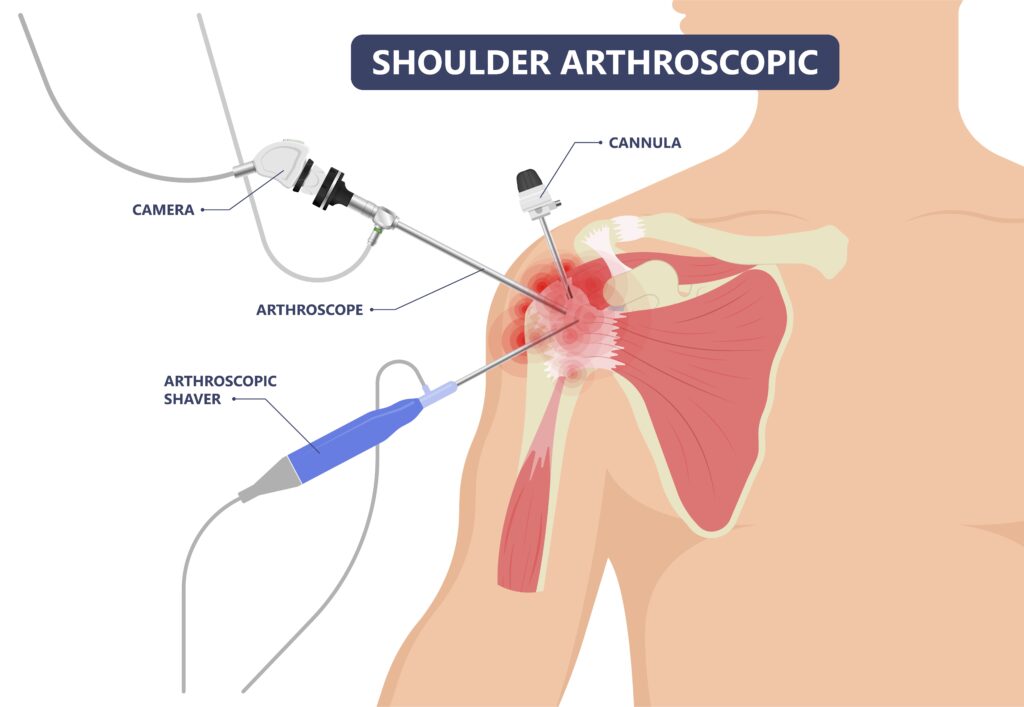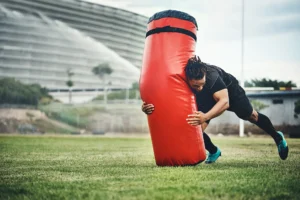Arthroscopic debridement of the shoulder is a minimally invasive approach to treating joint-related issues. It can be helpful in diagnosing and treating several shoulder problems. During arthroscopic debridement, the surgeon will make a few tiny incisions in the shoulder and then insert an arthroscope – a thin tube with a light and camera on the end – to get a better view of the joint. Small instruments will also be inserted and used to remove any loose or damaged tissue that may be causing pain and discomfort, as well as any bone spurs, synovial cysts, scar tissue, calcium deposits, ligament tears, or foreign bodies.

Arthroscopic debridement procedure may also be helpful if you have suffered a rotator cuff tear. Your surgeon may be able to excise the damaged portion of the cuff if the tear has affected less than 40 percent of the cuff’s total thickness. Partial thickness tears may have frayed or rough fragments removed (debrided). The surgeon will then stimulate bleeding in the injured area to promote healing.
Benefits of shoulder arthroscopic debridement
Being a minimally invasive procedure is one of the primary benefits of an arthroscopic debridement of the shoulder. It also carries fewer risks and less damage to surrounding tissues. Additionally, an arthroscopic debridement can be done as an outpatient procedure, meaning you don’t have to stay in the hospital overnight or for an extended period of time afterward. Recovery time is usually shorter than with traditional open arthroscopic surgery.
What to expect
Typically, an arthroscopic debridement procedure can take one hour or less, depending on the complexity of the case. Afterward, you will likely experience some soreness and stiffness in the affected shoulder for a few days, as well as limited range of motion for a few weeks. As you begin to heal, your range of motion will gradually increase, and the soreness should subside.
The success rate for arthroscopic debridement of the shoulder is generally estimated to be around 90%. Recovery time can take anywhere from a few days to several weeks or months, depending on the severity of your condition and the extent of arthroscopic debridement that was performed.
It is important to ease pain and swelling by resting, icing, and using anti-inflammatory medications such as ibuprofen or aspirin when needed. Your surgeon will recommend you keep your shoulder immobilized in a sling for two or three days. Larger tears may require you to wear the sling for a few weeks.
Alternative treatment options
In some cases, there may be alternatives to surgery that can help reduce shoulder pain or joint damage. Depending on your condition, these may include physical therapy, anti-inflammatory medications, cortisone injections, rest and ice therapy, bracing, arthrocentesis (joint aspiration), or ultrasonic treatment.
Preventing further injury
The best way to prevent recurring shoulder injuries or minor rotator cuff tears is to add strengthening and stretching exercises to your everyday routine. Sports or activities that involve repeated overhead motion, like baseball and tennis, can strain your shoulder. To prevent injury, it is important to keep muscles flexible and avoid repeated overhead activities. If you have continued pain in your shoulder after treatment, you should cut back your activity level and return to your physician for a check-up.
Am I a candidate for this operation?
In general, arthroscopic debridement of the shoulder is best suited for individuals who have pain and limited range of motion due to chronic shoulder issues or sports related injuries. These issues are often caused by inflammatory joint conditions like bursitis or tendinitis, as well as injuries such as ligament tears, rotator cuff tears, or fractures. It’s important to talk to your doctor and discuss the risks and benefits of arthroscopic debridement of the shoulder before making a decision about surgery. Together we can determine if arthroscopic debridement is the best course of action for you.
Please give us a call or complete the form below to set up a consultation with me.
"*" indicates required fields





